seattle

 The Sinking Ship parking garage in Seattle is aptly named, a fact which you can clearly see when you look at it. The building is a multi-story parking garage in Pioneer Square and James Street to the north, Yesler Way to the south, and 2nd Avenue to the east. It is just steps away from the Pioneer Building on the site of the former Occidental Hotels and Seattle Hotel. The look of the structure gives the illusion of a sinking ship, even though it is level. After the Seattle Hotel was demolished in 1961, the Sinking Ship was built as part of a neighborhood redesign.
The Sinking Ship parking garage in Seattle is aptly named, a fact which you can clearly see when you look at it. The building is a multi-story parking garage in Pioneer Square and James Street to the north, Yesler Way to the south, and 2nd Avenue to the east. It is just steps away from the Pioneer Building on the site of the former Occidental Hotels and Seattle Hotel. The look of the structure gives the illusion of a sinking ship, even though it is level. After the Seattle Hotel was demolished in 1961, the Sinking Ship was built as part of a neighborhood redesign.
Designers Gilbert H Mandeville, an engineer and Gudmund B Berge, an architect of the Seattle firm Mandeville 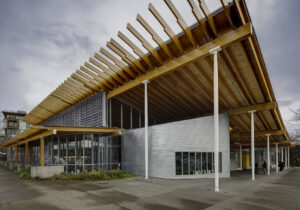 and Berge built the structure in 1965. They also designed the Logan Building and an addition to the First Presbyterian Church downtown, the Ballard branch of Seattle Public Library, which is an unusual building too, although not like the Sinking Ship, and two buildings at the Seattle World’s Fair in 1962….the Alaska Building and the Transportation 21 Building, neither of which are really unusual.
and Berge built the structure in 1965. They also designed the Logan Building and an addition to the First Presbyterian Church downtown, the Ballard branch of Seattle Public Library, which is an unusual building too, although not like the Sinking Ship, and two buildings at the Seattle World’s Fair in 1962….the Alaska Building and the Transportation 21 Building, neither of which are really unusual.
The parking It is owned by the Kubota–Fujii family, who had acquired the Seattle Hotel in 1941. Doris Kubota, from the same family, called the garage the “ugliest building in all of Seattle.” During the 2001 Mardi Gras riot the building was used as a staging area for police and city officials. The Seattle Monorail Project had hoped to acquire the site through condemnation to turn it into a monorail station at the site of the Sinking Ship, but the Kubota family disputed the condemnation lawsuit, stating their intention to build housing and retail at the site.

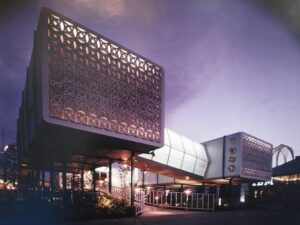 While Doris Kubota thought the building was ugly, it was named the “coolest parking lot” in the United States by the design publication Architizer Journal in 2019 and still remains on that list today, dropping to 4th place. While I agree that it is cool, I’m not a fan of concrete buildings. Still, it makes sense for a parking structure to be made out of concrete. As of 2022, the garage is managed by Diamond Parking, and it is open 24 hours a day.
While Doris Kubota thought the building was ugly, it was named the “coolest parking lot” in the United States by the design publication Architizer Journal in 2019 and still remains on that list today, dropping to 4th place. While I agree that it is cool, I’m not a fan of concrete buildings. Still, it makes sense for a parking structure to be made out of concrete. As of 2022, the garage is managed by Diamond Parking, and it is open 24 hours a day.

 These days, people can buy a ticket to ride a train and have a private room with a bed and bathroom in it to make their trip more comfortable. Since I have taken a train trip from Seattle, Washington to Chicago, Illinois, I can tell you that paying the extra money for that private cabin is really a good idea. We traveled in in a seat among the other passengers, and while the seat was pretty comfortable, it was not comfortable to sleep in. My parents traveled on the Amtrack too, and they did get a private cabin, so their experience was probably much better than mine, although I loved the trip…just not the sleeping part of it. Of course, even with the comfort my parents had on
These days, people can buy a ticket to ride a train and have a private room with a bed and bathroom in it to make their trip more comfortable. Since I have taken a train trip from Seattle, Washington to Chicago, Illinois, I can tell you that paying the extra money for that private cabin is really a good idea. We traveled in in a seat among the other passengers, and while the seat was pretty comfortable, it was not comfortable to sleep in. My parents traveled on the Amtrack too, and they did get a private cabin, so their experience was probably much better than mine, although I loved the trip…just not the sleeping part of it. Of course, even with the comfort my parents had on 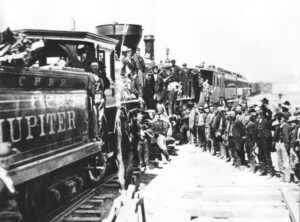 their trip, it was nothing compared to the Gilded Age, when the very rich had their own car on the train.
their trip, it was nothing compared to the Gilded Age, when the very rich had their own car on the train.
The Gilded Age was a time when the very rich went to great lengths to let all of the “less fortunate ones” know that they had wealth. The Gilded Age took place mostly from 1887 to 1900, with some earlier exceptions. One of the main objectives of life during the Gilded Age, if one could afford it, was to see and be seen in the most luxurious ways possible, and the railway was no different. Commercial air travel didn’t exist then, and cars were very slow. So, when the nation came into the age of the rails, the wealthy made sure that extreme luxury there was no exception. By the 1870s, private railroad cars…some extravagantly decorated…were the most fashionable way to travel. I suppose it would have been like the very 
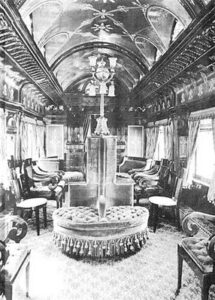 rich on ships, but they could stay a little closer to home, and still travel. The people would never travel in humble wooden coach seats, which I can understand, but most people had no other choice. Money bought comfort.
rich on ships, but they could stay a little closer to home, and still travel. The people would never travel in humble wooden coach seats, which I can understand, but most people had no other choice. Money bought comfort.
With great fanfare, the very rich boarded their own entire rail cars, where the walls were lined in velvet, the upholstery plush, and the decor much like that of a fancy parlor at home. The private cars had bedrooms, running water, and a private water closet. Now expense was spared to make sure that the wealthy car owner was never out of the lap of luxury. It seems like a cruel way to act, but I suppose it is simply the way it is.
 As is common with ships, the William P. Frye was a four-masted steel barque named after a US Republican politician of the same name, from the state of Maine. The ship was built by Arthur Sewall and Co of Bath, Maine in 1901. For a time, the ship had a great run…until 1915, that is. The ship sailed from Seattle, Washington on November 4, 1914, with a cargo of 189,950 US bushels of wheat. The ship and its cargo were bound for Queenstown, Falmouth, or Plymouth in the United Kingdom. In 1915 the United Kingdom was at war with Imperial Germany, but the United States was not enter the war yet and was officially neutral. It was early in the war, but that doesn’t make it any less dangerous to sail the high seas.
As is common with ships, the William P. Frye was a four-masted steel barque named after a US Republican politician of the same name, from the state of Maine. The ship was built by Arthur Sewall and Co of Bath, Maine in 1901. For a time, the ship had a great run…until 1915, that is. The ship sailed from Seattle, Washington on November 4, 1914, with a cargo of 189,950 US bushels of wheat. The ship and its cargo were bound for Queenstown, Falmouth, or Plymouth in the United Kingdom. In 1915 the United Kingdom was at war with Imperial Germany, but the United States was not enter the war yet and was officially neutral. It was early in the war, but that doesn’t make it any less dangerous to sail the high seas.
When the ship was near the coast of Brazil, the Imperial German Navy raider SMS Prinz Eitel Friedrich overtook the William P. Frye on January 27, 1915. The Germans stopped and boarded the ship. I can’t imagine what it must have been like to have an enemy navy detain a ship I was on. You just never know what they are going to do. The William P. Frye was owned by the United States, and so a neutral ship. The ship should have been treated  as neutral. The problem the William P. Frye had is that the cargo was deemed a legitimate war target because the Germans believed it was bound for Britain’s armed forces. In reality, even detaining the ship was probably an act of war, but that never seemed to bother the Germans anyway.
as neutral. The problem the William P. Frye had is that the cargo was deemed a legitimate war target because the Germans believed it was bound for Britain’s armed forces. In reality, even detaining the ship was probably an act of war, but that never seemed to bother the Germans anyway.
Upon making his decision that the William P. Frye was a legitimate target, the captain of SMS Prinz Eitel Friedrich, Max Thierichens, ordered that William P. Frye’s cargo of wheat be thrown overboard. The captain and crew began to comply, most likely begrudgingly, and when the orders were not followed fast enough, he took the ship’s crew and passengers prisoner. Then he ordered the ship scuttled on January 28, 1915. The William P. Frye was the first American vessel sunk during World War I, and the United States wasn’t even in the war yet. The  owners of the ship, Arthur Sewall and Co, wanted damages for the sinking of the ship and presented a claim for $228,059.54, which would total $5,763,800 today. In all, the SMS Prinz Eitel Friedrich scuttled eleven ships during their reign of terror. They stole coal and gold from their victims, which kept them going for a while, until they developed engine trouble.
owners of the ship, Arthur Sewall and Co, wanted damages for the sinking of the ship and presented a claim for $228,059.54, which would total $5,763,800 today. In all, the SMS Prinz Eitel Friedrich scuttled eleven ships during their reign of terror. They stole coal and gold from their victims, which kept them going for a while, until they developed engine trouble.
In another act of war, Thierichens took the passengers and the crew captive. Women and children, were part of approximately 350 people taken prisoner from eleven different ships that SMS Prinz Eitel Friedrich’s crew had searched and destroyed. I suppose the possible act of war was somewhat forgiven when all 350 were released on March 10, 1915, when the German raider had engine trouble, and docked Newport News, Virginia, but then again, what else could they do with them. Nevertheless, an outraged American government forced the Germans to apologize for the sinking, and of course, the SMS Prinz Eitel Friedrich was detained in port.
 My dad, Al Spencer loved trains. I’m sure it all started with his dad’s job as a carpenter on the Great Northern Railway. Dad and his siblings rode the trains to school and such. It was one of the perks of his dad’s job. I know most kids like trains, but I think Dad maybe liked them more than most kids. He grew up around them.
My dad, Al Spencer loved trains. I’m sure it all started with his dad’s job as a carpenter on the Great Northern Railway. Dad and his siblings rode the trains to school and such. It was one of the perks of his dad’s job. I know most kids like trains, but I think Dad maybe liked them more than most kids. He grew up around them.
On May 1, 1971, a very exciting event took place, especially for my dad. It was on that day that the Amtrak train was born. It was originally established by the Congressional Rail Passenger Service Act, which consolidated the United State’s existing 20 passenger railroads into one. Of course, most of us know that the Amtrak train has since had a long history…49 years to be exact. Back then the Amtrak train line served 43 states with a total of 21 routes. These days they not only handle traditional interstate passenger rail in 46 states, but they also operate high-speed trains along their busiest route, the Northeast Corridor from Washington DC, to Boston. With more than 500 destinations throughout a 21,000 mile system, Amtrak has grown to 33 routes across America. Nevertheless, the Amtrak train system was always focused on getting from Point A to Point B safely and swiftly, even in 1971.
From the time that first Amtrak rolled out of the station, my Dad was hooked. He knew he wanted to take a trip by way of that train. During the early years of the Amtrak, we heard a lot about it. It wasn’t going to be a trip that we went on as a family, but rather a special trip for Dad and Mom. That trip would finally happen in about 1991, when Mom and Dad took the Amtrak from San Diego to Seattle. My sister, Caryl Reed and her family lived there at the time, and they would spend time visiting with them after the train ride. My dad was so excited!! In fact, he was the epitome of “the kid in the candy shop.” I can see why he would be so excited. After 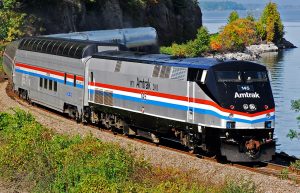 all, he had waited twenty years for that trip. I suppose that prior to that time, he couldn’t think of any reason to take the trip, but when my sister moved to Bremerton, Washington, the time had come. Mom and Dad made many trips to Washington in those years, but that trip on the Amtrak Train really was the most exciting way for them to travel.
all, he had waited twenty years for that trip. I suppose that prior to that time, he couldn’t think of any reason to take the trip, but when my sister moved to Bremerton, Washington, the time had come. Mom and Dad made many trips to Washington in those years, but that trip on the Amtrak Train really was the most exciting way for them to travel.
I can picture my dad now. Not how he looked. I have a picture of that. No…I can picture how he felt. He was that “kid in the candy store” again. I could picture him feeling like he was back in Superior, Wisconsin, hopping the train, even though he had a pass to ride the train.
 Sometimes, no matter how hard the airlines work to prevent it, things go wrong. Alaskan Airlines flight 1866, which became the first fatal jet airliner crash involving Alaska Airlines, was on a routine flight from Anchorage, Alaska to Seattle, Washington. The flight was scheduled to make intermediate stops at Cordova (CDV) and Yakutat (YAK/PAYA), which it made. It was also scheduled to stop in Juneau and Sitka before ending in Seattle. Things were going along smoothly when the flight landed at Yakutat at 11:07am and then departed at 11:35am for Juneau. The flight was operated by IFR (Instrument Flight Rules). At 09:13 Flight AS1866 departed from Anchorage and landed at 09:42 in Cordova. Something was not right with the luggage upon departing Cordova, so the flight landed at Yakutat at 11:07am. Problem solved the plane took off again at 11:35am headed for Juneau.
Sometimes, no matter how hard the airlines work to prevent it, things go wrong. Alaskan Airlines flight 1866, which became the first fatal jet airliner crash involving Alaska Airlines, was on a routine flight from Anchorage, Alaska to Seattle, Washington. The flight was scheduled to make intermediate stops at Cordova (CDV) and Yakutat (YAK/PAYA), which it made. It was also scheduled to stop in Juneau and Sitka before ending in Seattle. Things were going along smoothly when the flight landed at Yakutat at 11:07am and then departed at 11:35am for Juneau. The flight was operated by IFR (Instrument Flight Rules). At 09:13 Flight AS1866 departed from Anchorage and landed at 09:42 in Cordova. Something was not right with the luggage upon departing Cordova, so the flight landed at Yakutat at 11:07am. Problem solved the plane took off again at 11:35am headed for Juneau.
What happened next, sealed the fate of all 111 people onboard the flight. The date was September 4, 1971, and it was rainy day, with low clouds. Somehow, not everyone saw the situation in the same way, but the closest accounts to reality were the ones that had the plane flying into low clouds. According to the witnesses, it then flew straight into the Chilkat Mountains in Haines Borough, near Juneau, Alaska.
The aircraft was a Boeing 727-100 with U.S. registry N2969G. It was scheduled to stop in Juneau and Sitka before ending in Seattle. The aircraft was manufactured in 1966 as c/n 19304 and manufacturer’s serial number 287. It had accumulated 11,344 flight hours prior to the incident. Seven crew members were aboard, as well as 104 passengers. The plane was told to descend and maintain 12,000 feet, and the tower asked for confirmation that the level had been maintained during a maneuver to line up for landing. He was told that the flight level had been maintained, but in reality, it couldn’t have been. At 12:00, the dispatcher repeated the permit for passing the Howard point, and also estimated the approach time as 12:10. At 12:01 Flight 1866 reported passing 12 thousand feet. At 12:07, the plane was asked about its location relative to the landing course and the waiting pattern, and the controller reported that Flight 1866 had just entered the approach scheme and followed the Howard radio beacon, after which it gave permission to descend to pass the directional beacon at a height of no more than 9 thousand feet. The crew confirmed the permission to descend and reported on leaving a height of 12 thousand feet. At 12:08, the controller asked about the altitude, with the flight responding, “…leaving five thousand five… four thousand five hundred.” Flight 1866 was then instructed to contact the Juneau ATC Tower. The crew acknowledged the transmission and then changed to the tower frequency. The tower controller said, “Alaska 66, understand, ah, I didn’t, ah, copy the intergusts to 28, the altimeter now 29.47, time is 09 112. call section, landing Runway 8, the wind 0800 at 22 occasional us by Barlow”. The crew of Flight 1866 did not respond.
“According to the testimonies of three eyewitnesses, at this time there was a little rain, and the sky was covered with clouds. According to the meteorological service of the airport, at 11:56, the sky was partly cloudy with a lower boundary of 1,500 feet and up to 3,500 feet, and up to 7,500 feet – full clouds, light rain, visibility 15 miles. Also at 1:10 pm a pilot flying from Juneau to Sitka reported weather at 11:15 – overcast, light rain, lower cloud limit 1000 feet, upper – 3000 feet, visibility 10 miles, mountain tops and passes closed. Two witnesses who were in the region of the Chilkat Mountains stated that they heard a low-flying aircraft, but  could not see it because of low visibility, which they estimated at 55-65 meters. The sound of the engines was normal. Then after a minute there was an explosion. The third witness saw a plane that disappeared into the clouds, but then did not hear any sounds. At 12:15, aircraft struck the eastern slope of a canyon in the Chilkat Range of the Tongass National Forest at the 2500-foot level, 22 miles west of Juneau. The aircraft exploded on impact.” When the crew stopped responding, at 12:23, an immediate search for Flight 1866 began. A few hours later, the wreckage of the aircraft was found on the eastern slope of the Chilkat ridge at 21.3 miles west of Juneau airport. There were no survivors.
could not see it because of low visibility, which they estimated at 55-65 meters. The sound of the engines was normal. Then after a minute there was an explosion. The third witness saw a plane that disappeared into the clouds, but then did not hear any sounds. At 12:15, aircraft struck the eastern slope of a canyon in the Chilkat Range of the Tongass National Forest at the 2500-foot level, 22 miles west of Juneau. The aircraft exploded on impact.” When the crew stopped responding, at 12:23, an immediate search for Flight 1866 began. A few hours later, the wreckage of the aircraft was found on the eastern slope of the Chilkat ridge at 21.3 miles west of Juneau airport. There were no survivors.
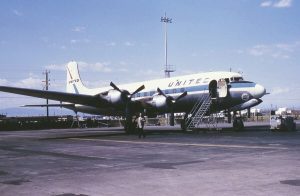 Most plane crashes are caused by pilot error or mechanical failure, but sometimes, someone commits an act of terrorism, or as in the case of United Airlines Flight 629 someone commits an act of hatred aimed at one person. These acts are never rational, and this one certainly wasn’t, because Jack Gilbert Graham was not a rational man. I think many, if not most of us have thought at one point or another that our parents were somehow meaner to us than any other parent in the universe, but Jack Graham took that obsession to the next level. He decided that his mother was responsible for giving him a horrible childhood, and so he decided to take his revenge on her by placing a bomb in the luggage she was checking.
Most plane crashes are caused by pilot error or mechanical failure, but sometimes, someone commits an act of terrorism, or as in the case of United Airlines Flight 629 someone commits an act of hatred aimed at one person. These acts are never rational, and this one certainly wasn’t, because Jack Gilbert Graham was not a rational man. I think many, if not most of us have thought at one point or another that our parents were somehow meaner to us than any other parent in the universe, but Jack Graham took that obsession to the next level. He decided that his mother was responsible for giving him a horrible childhood, and so he decided to take his revenge on her by placing a bomb in the luggage she was checking.
His mother, Daisie Eldora King, who was a 53 year old Denver businesswoman was en route to Alaska to visit her daughter. Her flight United Airlines Flight 629, registration N37559, was a Douglas DC-6B aircraft also known as “Mainliner Denver.” The flight had originated at New York City’s La Guardia Airport and made a scheduled stop in Chicago before continuing to Denver’s Stapleton Airfield and landed at 6:11pm, 11 minutes late. At Denver the aircraft was refueled with 3,400 US gallons of fuel, and had a crew replacement. Captain Lee Hall, who was a World War II veteran, assumed command of the flight for the segments to Portland and 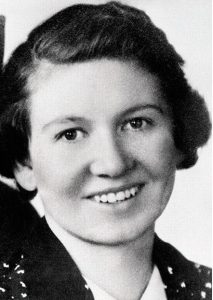 Seattle. The flight took off at 6:52pm and at 6:56pm made its last transmission stating it was passing the Denver omni. Seven minutes later, the Stapleton air traffic controllers saw two bright lights suddenly appear in the sky north-northwest of the airport. Both lights were observed for 30 to 45 seconds, and both fell to the ground at roughly the same speed. The controllers then saw a very bright flash originating at or near the ground, intense enough to illuminate the base of the clouds 10,000 feet above the source of the flash. Upon observing the mysterious lights, the controllers quickly determined there were no aircraft in distress and contacted all aircraft flying in the area; all flights were quickly accounted for except for United Flight 629. The date was November 1, 1955.
Seattle. The flight took off at 6:52pm and at 6:56pm made its last transmission stating it was passing the Denver omni. Seven minutes later, the Stapleton air traffic controllers saw two bright lights suddenly appear in the sky north-northwest of the airport. Both lights were observed for 30 to 45 seconds, and both fell to the ground at roughly the same speed. The controllers then saw a very bright flash originating at or near the ground, intense enough to illuminate the base of the clouds 10,000 feet above the source of the flash. Upon observing the mysterious lights, the controllers quickly determined there were no aircraft in distress and contacted all aircraft flying in the area; all flights were quickly accounted for except for United Flight 629. The date was November 1, 1955.
The plane was blown up over Longmont, Colorado at about 7:03pm local time, while en route from Denver, Colorado, to Portland, Oregon, and Seattle, Washington. All 39 passengers and five crew members on board were killed in the explosion and crash. There was early speculation that something other than a mechanical problem or pilot error was responsible, given the magnitude of the in-air explosion. Investigators determined that Jack Gilbert Graham was responsible for bombing the airplane to kill his mother as revenge for his childhood and to obtain a large life insurance payout. Within 15 months of the explosion, Graham, who already had an extensive criminal record, was tried, convicted, and executed for the crime.
 It was a horrible thing. One sick man committed murder in the skies, by killing his mother with a bomb, and in the process killed 41 other people too. I don’t know if he though the could really get away with it, but investigations are pretty sophisticated…even back then. It amazes me that they can take all those plane parts and examine them…somehow finding the source of the explosion, and tracing it back to the source. Then, by finding out who the luggage belonged to, they figured the whole thing out. Criminals really aren’t so smart, even though they think they have it all figured out. It is just sad that 42 people lost their lives, because some spoiled brat of a child thought his mom was too harsh when he was a kid…with no evidence to prove his point at all.
It was a horrible thing. One sick man committed murder in the skies, by killing his mother with a bomb, and in the process killed 41 other people too. I don’t know if he though the could really get away with it, but investigations are pretty sophisticated…even back then. It amazes me that they can take all those plane parts and examine them…somehow finding the source of the explosion, and tracing it back to the source. Then, by finding out who the luggage belonged to, they figured the whole thing out. Criminals really aren’t so smart, even though they think they have it all figured out. It is just sad that 42 people lost their lives, because some spoiled brat of a child thought his mom was too harsh when he was a kid…with no evidence to prove his point at all.
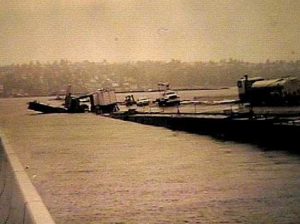 Since my daughter, Amy Royce and her family moved to Western Washington State, I keep coming across historic facts about the area. Of course, they were there before, but probably just didn’t grab my interest then. One such fact is that Seattle was home to the world’s first floating concrete bridge. Washington governor Clarence Martin and Lacey V Murrow, the Washington Toll Bridge Authority director, broke ground on the Lake Washington Bridge in December of 1938. The Lake Washington Floating Bridge was also known as the Mercer Island Bridge, it spanned Lake Washington from Seattle on the west to Bellevue to the east. The bridge was renamed Murrow Bridge in honor of Lacey Murrow in 1967. The bridge was a project financed by the Public Works Administration to give work to
Since my daughter, Amy Royce and her family moved to Western Washington State, I keep coming across historic facts about the area. Of course, they were there before, but probably just didn’t grab my interest then. One such fact is that Seattle was home to the world’s first floating concrete bridge. Washington governor Clarence Martin and Lacey V Murrow, the Washington Toll Bridge Authority director, broke ground on the Lake Washington Bridge in December of 1938. The Lake Washington Floating Bridge was also known as the Mercer Island Bridge, it spanned Lake Washington from Seattle on the west to Bellevue to the east. The bridge was renamed Murrow Bridge in honor of Lacey Murrow in 1967. The bridge was a project financed by the Public Works Administration to give work to  unemployed Washingtonians and to make the towns across the lake from Seattle more accessible to suburban development.
unemployed Washingtonians and to make the towns across the lake from Seattle more accessible to suburban development.
When the finished bridge opened in 1940, the Seattle Times called it “the biggest thing afloat.” It’s hard to imagine that 100,000 tons of steel, could float on more than 20 hollow concrete pontoons, and carry 5,000 cars per day. By 1989 the number of cars grew to 10,000 cars. Since the bridge would become such an important road between the two cities, the flood of November 1990 was especially devastating, in that it completely destroyed the bridge. While the bridge was closed for repairs, construction workers punched giant holes in the pontoons that kept it afloat and went home for the weekend. 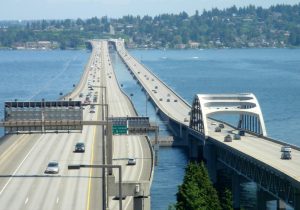 A few days of rain and high winds filled the pontoons with water, and the broken bridge sank.
A few days of rain and high winds filled the pontoons with water, and the broken bridge sank.
This would not be an easy fix. As the pontoons filled with water and the bridge sank, it pulled about a half a mile of highway into the lake. There was simply no way to fix it. The bridge would have to be rebuilt from scratch. In the end, it would take three years to rebuild at a total cost of $93 million. When the bridge reopened, it would complete the coast to coast Interstate 90. On this day, September 12, 1993, the rebuilt Lacey V Murrow Bridge opened. This bridge was the east bound lane of I-90 from Seattle to Bellevue. The westbound lane is on the Homer M Hadley Bridge, which was not destroyed by the flood.
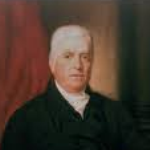
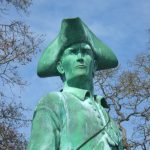 Years ago, when my sister, Caryl Reed lived in the Seattle, Washington area, I remember thinking how strange the names of some of the places were. Now that my daughter, Amy Royce and her family live in northern Washington, the names of those places have come to my attention again. It’s not that the names are all so very odd, but rather that I have a curiosity about how things and places got their names. Places like Whidbey Island, and Puget Sound are just not your typical Indian names like so much of the area, such as Snoqualmie Pass, Issaquah, or Puyallup, which all have Indian meanings. So, how did these other places get their names. Well yesterday, part of the mystery was solved for me. I’m sure some people know what I found out, but surprisingly it may not be as many people from Washington state as you might think.
Years ago, when my sister, Caryl Reed lived in the Seattle, Washington area, I remember thinking how strange the names of some of the places were. Now that my daughter, Amy Royce and her family live in northern Washington, the names of those places have come to my attention again. It’s not that the names are all so very odd, but rather that I have a curiosity about how things and places got their names. Places like Whidbey Island, and Puget Sound are just not your typical Indian names like so much of the area, such as Snoqualmie Pass, Issaquah, or Puyallup, which all have Indian meanings. So, how did these other places get their names. Well yesterday, part of the mystery was solved for me. I’m sure some people know what I found out, but surprisingly it may not be as many people from Washington state as you might think.
The islands of the coast of Washington, which extend for a number of miles inland, have always been of great interest to explorers. Waterways with islands must always lead to passages, right? Well, maybe not. There was an explorer named Joseph Whidbey who led an expedition that embarked on August 8, 1794 to look for a Northwest Passage near Juneau, Alaska. Whidbey’s goal was to locate the passage known today as the Inside Passage to Juneau. He found the passage, but felt that since it was inaccessible most of the year, due to ice in the area, it would not really serve any useful purpose. Of course, as anyone who has cruised to Alaska knows, that passage has become a very useful waterway, especially in the tourism business. Whidbey had also accompanied Lieutenant Peter Puget in small boats in 1792, to explore what is now known as the Puget Sound. On June 2nd of that trip, the men discovered Deception Pass, which was so named because the explorers erroneously thought that Whidbey Island was a peninsula, until the pass proved otherwise. The excursion was part of the Vancouver Expedition, headed up by Captain George Vancouver, who also named Whidbey Island in Joseph Whidbey’s honor.
The Northwest passage did exist, but it would not be Joseph Whidbey, Peter Puget, or George Vancouver who 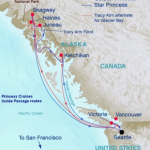
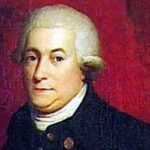 would find it, and it would be a number of years before it was discovered at all. In the end, one Robert McClure discovered the passage in 1850, and Norwegian explorer Roald Amundsen who would first navigate it with a small expedition in 1903 to 1906. The passage was unusable until about 2009 when Artic ice which had prevented regular marine shipping throughout most of the year melted some, moving back to open more waterways for the shipping industry. For me, this was interesting information, because my curious mind wonders about these things like just where did that name come from.
would find it, and it would be a number of years before it was discovered at all. In the end, one Robert McClure discovered the passage in 1850, and Norwegian explorer Roald Amundsen who would first navigate it with a small expedition in 1903 to 1906. The passage was unusable until about 2009 when Artic ice which had prevented regular marine shipping throughout most of the year melted some, moving back to open more waterways for the shipping industry. For me, this was interesting information, because my curious mind wonders about these things like just where did that name come from.
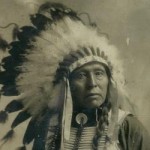 Until my daughter, Amy Royce and her family moved to the Seattle area last year, it never occurred to me to wonder how Seattle might have received its name. It had always been Seattle. It seemed like an interesting name, but that was really all it was to me. Nevertheless, whether you know the story or not, the name is not simply interesting. Seattle was actually named after an Indian chief named Seathl. He was the chief of the Duwamish and Suquamish tribes who lived around the Pacific Coast bay that is called the Puget Sound today. He was born about 1780 or 1790, the son of a Suquamish father and a Duwamish mother, a lineage that gave him influence in both tribes.
Until my daughter, Amy Royce and her family moved to the Seattle area last year, it never occurred to me to wonder how Seattle might have received its name. It had always been Seattle. It seemed like an interesting name, but that was really all it was to me. Nevertheless, whether you know the story or not, the name is not simply interesting. Seattle was actually named after an Indian chief named Seathl. He was the chief of the Duwamish and Suquamish tribes who lived around the Pacific Coast bay that is called the Puget Sound today. He was born about 1780 or 1790, the son of a Suquamish father and a Duwamish mother, a lineage that gave him influence in both tribes.
In the early 1850s, there were small groups of Euro-Americans who started settling along the banks of the Puget Sound. Chief Seathl welcomed these new neighbors, and was known to treat them with kindness. In 1853, the settlers moved to a site on Elliot Bay and established a permanent town there. 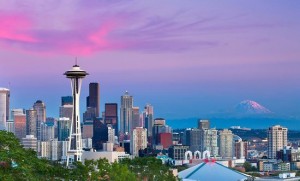 Since Chief Seathl had been so nice to them, they named the town after him. I can’t say why the different in the spelling, but to this day it is called Seattle. The site was picked because of the beautiful forest on the bluff behind the new village.
Since Chief Seathl had been so nice to them, they named the town after him. I can’t say why the different in the spelling, but to this day it is called Seattle. The site was picked because of the beautiful forest on the bluff behind the new village.
When the California Gold Rush hit, there came with it, a huge need for timber, and soon most of the villagers were at work cutting the trees and “skidding” them down a long chute to a newly constructed sawmill. The chute became known as “skid road.” Eventually, it became the main street in Seattle…and it kept its original name. When the Seattle business district later moved north, the area became a haven for drunks and derelicts. Consequently, “skid road” or “skid row” became lingo for the dilapidated area of any town. In fact, I don’t know of a big city that doesn’t have a “skid row” somewhere in it.
Many of the Indians in the area were hostile toward the settlers, and war broke out in 1855, but Chief Seathl  argued that resistance to the settlers would only get more people killed. After a time, the other Indians agreed, and the war ended in 1856. Chief Seathl tried to learn the ways of the white man, rather than fight them. Jesuit missionaries introduced him to Catholicism, and he became a devout believer. Many of the people of Seattle respected Chief Seathl and his religion, and they became Catholics too. Then, just thirteen years after the settlers founded the city of Seattle, Chief Seathl died in on June 7, 1866 at the age of 77 or 86 depending on the year of birth that people accept as correct. In a strange tradition, to provide Chief Seattle with a pre-payment for the difficulties he would face in the afterlife, the people of Seattle levied a small tax on themselves to use the chief’s name.
argued that resistance to the settlers would only get more people killed. After a time, the other Indians agreed, and the war ended in 1856. Chief Seathl tried to learn the ways of the white man, rather than fight them. Jesuit missionaries introduced him to Catholicism, and he became a devout believer. Many of the people of Seattle respected Chief Seathl and his religion, and they became Catholics too. Then, just thirteen years after the settlers founded the city of Seattle, Chief Seathl died in on June 7, 1866 at the age of 77 or 86 depending on the year of birth that people accept as correct. In a strange tradition, to provide Chief Seattle with a pre-payment for the difficulties he would face in the afterlife, the people of Seattle levied a small tax on themselves to use the chief’s name.
by guest writer – Brenda Schulenberg
 Caryn became part of our family on March 1, 1975…over 41 years ago, when she married my brother Bob!!! Little did I know at that time that Caryn would become such an important part of the Schulenberg family. I don’t really remember too much of my life without Caryn being a part of it. She has been a major part of our family for so many years now…and I would never want to imagine our family without her as a part of it.
Caryn became part of our family on March 1, 1975…over 41 years ago, when she married my brother Bob!!! Little did I know at that time that Caryn would become such an important part of the Schulenberg family. I don’t really remember too much of my life without Caryn being a part of it. She has been a major part of our family for so many years now…and I would never want to imagine our family without her as a part of it.
In the early years, Caryn spent most of her time raising her two girls, my nieces, Corrie and Amy. Then, before we knew it along came her four grandchildren my great nieces and nephews, Chris, Shai, Caalab and Josh. All of them are true gifts to Caryn. She really enjoys being a Mother and Grandma…and maybe someday soon (I hope not too soon) a Great Grandma! In August 2014, Caryn’s oldest grandson Chris moved to Sheridan to go to Culinary School. Now, next month Chris will graduate and then continue to live and work in Sheridan. Luckily, Sheridan is not too far away but it is still hard because we all miss him very much. Caryn’s youngest daughter Amy, husband Travis and son Caalab moved to Washington State in June of 2015. This too was very hard for Caryn and the rest of us, but we have made the best of it and enjoy hearing about their fun adventures on Facebook. Bob, Caryn and their daughter, Shai have gone to visit and I’m sure Bob and Caryn will visit again soon. Rumor has it that Shai will be joining her family in Washington in July. Although we are all very sad to see Shai leave Casper, we do know how much she misses her family and how much they miss her.
Caryn has always enjoyed bowling. She and Bob also like to go on walks and hikes when the weather permits.  Bob and Caryn enjoy traveling for their annual hiking/anniversary trip to Thermopolis and to the Black Hills. They also travel for bowling tournaments too.
Bob and Caryn enjoy traveling for their annual hiking/anniversary trip to Thermopolis and to the Black Hills. They also travel for bowling tournaments too.
Through the years, and as both sets of parents aged, Caryn was the primary care giver for all four parents…hers and ours. It was tough on all of us to lose them, but they are in a far better place now. My mom, Joann is still with us and living out at Shepherd of the Valley Care Center. Caryn is still very active in my mom’s care and we do appreciate everything she has and still does for her by going to all of her doctor appointments with her and keeping all of us up to date as to how she is doing.
In October 2013 when I, myself, got sick. Caryn saved my life by convincing me that I had to go to the hospital. Had I not gone I think I would have died very soon after. She (along with all of my other family, friends and co-workers) have been with me all the way in my long journey to a healthier life style…from going to the hospital, rehab at Elkhorn, and then once I went home she did whatever I needed help with. I couldn’t have done it without all of them. Caryn and my sister Jennifer will be traveling with me to Fort Collins, Colorado later this summer for my skin removal surgery…and I already know that Caryn and the rest of the gang will help me through the surgery and recovery too…because that is just how she is.
On, October 18, 2015 my two year anniversary of going to the hospital seven of us hiked the Bridle Trail up on Casper Mountain. We all had a great time until Caryn fell and broke her shoulder. It was just one of those  things. It was terrible as Caryn had to have surgery on it and months of physical therapy. This was hard for Caryn because she is so used to being the caregiver not the one needing care. Caryn was a trooper throughout it all, and she knew what she needed to do to recover and she did it. She recovered very well and very quickly. She was a star patient.
things. It was terrible as Caryn had to have surgery on it and months of physical therapy. This was hard for Caryn because she is so used to being the caregiver not the one needing care. Caryn was a trooper throughout it all, and she knew what she needed to do to recover and she did it. She recovered very well and very quickly. She was a star patient.
Caryn is an amazing woman! She is one of the best sisters-in-law (I consider her my Sister) that I could ever ask for. Today is Caryn’s 60th birthday (I know she still looks so young) and I just want to say Happy Birthday Caryn. We all love you and appreciate you very, very much!!!!

